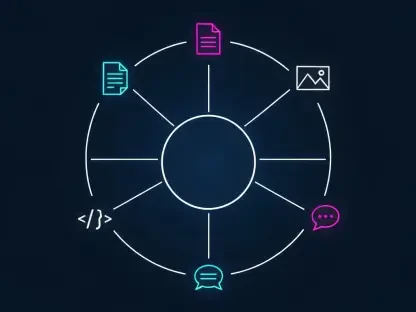Several e-commerce companies are reallocating their marketing budgets, significantly reducing their expenditure on email marketing while increasing investments in WhatsApp. This strategic shift is driven by the changing dynamics of customer engagement and evolving marketing performance metrics. As email marketing faces challenges related to effectiveness and cost, WhatsApp is emerging as a more powerful and engaging communication tool for brands.
Email Fatigue and Engagement Issues
Declining Effectiveness of Email Marketing
Email marketing has seen a marked decrease in effectiveness, with a significant drop in open rates from an average of 25% to below 15% over the past five years. This downward trend can be attributed to email fatigue, as consumers grow weary of the overwhelming volume of emails they receive daily. The saturation of inboxes leads to lower engagement as recipients increasingly ignore or delete promotional emails without reading them. This decline has posed challenges for companies relying heavily on email as their primary marketing channel, forcing them to explore alternatives.
Additionally, the competitive nature of email marketing means that brands must work harder to stand out in crowded inboxes. As consumers become more selective about which emails they open, the overall impact of email campaigns weakens. This evolving landscape highlights the need for e-commerce brands to find new ways to capture and retain customer attention, driving the exploration of more engaging channels like WhatsApp.
Rising Costs and ROI Decline
The cost associated with email marketing has also risen. As competition for inbox space intensifies, brands need to invest more in maintaining their visibility. This increased expenditure includes higher costs for email acquisition, list maintenance, and deliverability efforts. Consequently, many companies are facing a 22% decline in email marketing ROI over the past three years. These rising costs, coupled with declining engagement rates, are prompting brands to seek more cost-effective alternatives to maximize their marketing budgets.
The pressure to achieve better returns on investment is significant. Companies grappling with reduced ROI must justify their marketing spending, leading them to pivot towards channels that promise higher engagement and conversion rates. This economic imperative drives the growing interest in WhatsApp, which offers a more favorable cost-to-engagement ratio, making it an attractive option for e-commerce brands seeking to improve the effectiveness of their marketing efforts.
WhatsApp’s Superior Performance Metrics
Impressive Engagement Rates
In stark contrast to the dwindling fortunes of email, WhatsApp offers exceptionally high engagement rates. With open rates exceeding 65% and delivery rates soaring over 90%, it has emerged as a powerful communication tool for e-commerce brands. These impressive metrics indicate that messages sent via WhatsApp are more likely to be read and acted upon by recipients, providing a more direct and effective means of customer engagement compared to email. The immediacy and personal nature of WhatsApp messages contribute to this success, as users are more inclined to open and interact with messages from brands.
The high engagement rates on WhatsApp are further enhanced by the platform’s interactive features. Unlike traditional emails, WhatsApp messages facilitate real-time conversations between brands and customers, creating opportunities for dynamic interaction and immediate responses. This level of engagement is particularly valuable in today’s fast-paced digital landscape, where customers expect quick and personalized communication from the brands they engage with.
Higher Click-Through and Conversion Rates
WhatsApp’s performance metrics also extend to significantly higher click-through and conversion rates. The platform boasts click-through rates of 35%, far outstripping the 2-3% typically seen with email campaigns. Conversion rates on WhatsApp also stand at an impressive 15%, compared to the 1-3% often achieved through email. Such remarkable figures underscore the platform’s effectiveness in not just engaging customers, but also driving tangible outcomes such as purchases or further interactions with the brand.
These superior metrics make WhatsApp a highly attractive option for marketers aiming to maximize their ROI. The ability to achieve higher click-through and conversion rates means that every dollar spent on WhatsApp campaigns can yield greater returns. This economic efficiency is critical for brands looking to optimize their marketing investments, making WhatsApp an increasingly favored channel in the strategic reallocation of marketing budgets.
Real-World Success Stories
Case Example: Dot & Key
Dot & Key, a skincare brand, provides a compelling case study of the benefits of transitioning from an email-centric marketing approach to an omnichannel strategy that heavily involves WhatsApp. By doing so, Dot & Key achieved better customer interactions and higher open rates, which in turn drove revenue growth. The shift to WhatsApp allowed the brand to leverage the platform’s rich media capabilities, enhancing the personalization and engagement of their marketing messages.
This real-world example illustrates the tangible benefits that can be reaped from embracing WhatsApp as a key marketing channel. Higher engagement rates translate into meaningful customer interactions that are critical for building brand loyalty and driving sales. The positive outcomes experienced by Dot & Key highlight the potential for other e-commerce brands to achieve similar success by reallocating their email marketing budgets to more dynamic and interactive platforms like WhatsApp.
Abandoned Cart Recovery
WhatsApp has also proven to be highly effective for abandoned cart recovery, an area crucial for revenue optimization. While traditional email recovery rates for abandoned carts range between 8% to 12%, WhatsApp’s effectiveness in this domain ranges from 15% to 25%. This significant improvement in recovery rates offers a substantial advantage for e-commerce brands aiming to capture otherwise lost sales.
The enhanced recovery rates are partly due to WhatsApp’s immediacy and personal nature. Customers are more likely to respond to a prompt delivered via WhatsApp than an email, especially when the message is timely and engaging. This capability makes WhatsApp an invaluable tool for addressing one of the most common challenges in e-commerce—recovering lost sales due to abandoned shopping carts, thereby boosting overall revenue.
Personalization and Customer Interaction
Rich Media Capabilities
One of the standout features of WhatsApp is its rich media capabilities. Unlike traditional emails, which are primarily text-based, WhatsApp allows brands to engage customers with images, videos, and product catalogs. This rich media enables a more interactive and memorable experience for customers, making it easier for them to explore new products and services. Such interactions are not only more engaging but also more effective in driving product discovery and subsequent purchases.
These capabilities also mean that brands can create highly personalized marketing messages that resonate more deeply with their target audiences. Personalized content tends to perform better as it aligns more closely with individual customer preferences and needs. By using WhatsApp to deliver rich, personalized content, brands can enhance customer satisfaction and loyalty, leading to higher conversion rates and sustained revenue growth.
Real-Time Engagement
Another significant benefit of WhatsApp is its ability to facilitate real-time engagement with customers. This functionality enables brands to interact with customers instantly, answering their queries, offering support, and providing timely information. Real-time engagement is particularly valuable in today’s fast-paced consumer environment, where immediate responses can significantly enhance customer experience and satisfaction.
The advantages of real-time engagement extend beyond customer support. Brands can use WhatsApp to send timely reminders, updates on order status, and exclusive offers that prompt immediate action. This level of instant communication helps keep customers informed and engaged, fostering a closer connection between the brand and its audience. The ability to interact in real-time also allows brands to address any issues or concerns promptly, thereby improving overall customer satisfaction and retention.
Optimal Marketing Budget Allocation
Strategic Budget Mix
To maximize marketing ROI, it is suggested that e-commerce brands adopt a budget allocation strategy that dedicates 30-40% to messaging apps like WhatsApp, 50-60% to email, and 10% to SMS or other channels. This balanced approach takes full advantage of the respective strengths of each channel, ensuring a diverse and effective marketing strategy. By not overly relying on one single platform, brands can mitigate the limitations of any individual channel, striking a balance that optimizes overall engagement and interaction.
Such strategic budgeting allows e-commerce brands to leverage WhatsApp for its superior engagement metrics while still maintaining a presence on email and SMS. The email channel remains valuable for reaching audiences who prefer more traditional means of communication, while SMS can be used for urgent alerts or time-sensitive notifications. This optimal mix ensures a comprehensive marketing strategy that is well-equipped to handle the diverse preferences and behaviors of different customer segments.
Audience Segmentation for Maximum Impact
Effective audience segmentation is another critical aspect of optimizing marketing efforts. Younger consumers, typically aged 18-34, are more likely to engage with WhatsApp campaigns, while older demographics may still prefer emails or SMS. By tailoring marketing efforts to these preferences, brands can enhance engagement and campaign effectiveness, delivering the right message to the right audience through their preferred channel.
Segmenting the audience based on various factors such as age, interests, and behavior allows for more targeted and personalized marketing efforts. Tailored messages resonate more deeply and are more likely to result in higher engagement and conversion rates. By understanding and leveraging the preferred communication channels of different customer segments, e-commerce brands can craft more effective campaigns that drive better outcomes.
Future Trends and Innovations
Anticipated Growth of Messaging Apps
Marketing budgets are expected to continue incorporating more substantial investments in messaging apps by 2026. Platforms like WhatsApp are continuously innovating, with developments such as AI-powered chatbots, video calls, and enhanced analytics that offer better opportunities for personalized and dynamic customer interactions. These innovations make messaging apps even more valuable as marketing tools, enabling brands to provide superior customer experiences that drive engagement and loyalty.
The growth of messaging apps is not just a fleeting trend but a significant shift in how brands interact with their customers. As these platforms evolve, they will likely offer even more sophisticated features that enhance their effectiveness as marketing channels. This trajectory underscores the importance for e-commerce brands to stay ahead of technological advancements and incorporate messaging apps into their overall marketing strategies.
Embracing Innovation for Competitive Advantage
Several e-commerce companies are currently reassessing and reallocating their marketing budgets, making notable cuts in their spending on email marketing and channeling more funds into WhatsApp. This strategic adjustment is a direct response to the shifting paradigms of customer engagement and the evolving metrics that measure marketing performance. While email marketing is increasingly facing issues related to its effectiveness and the associated costs, WhatsApp is surfacing as a more compelling and interactive communication tool for brands. With its higher engagement rates and real-time interaction capabilities, WhatsApp provides a dynamic platform that allows brands to establish more immediate and personalized connections with their customers. This transition underscores the need for businesses to adapt to the changing landscape of digital marketing to maintain and boost customer engagement in an increasingly competitive market.









